Will Pfeifer's Blog, page 29
October 29, 2013
Suggested Halloween Reading: Part 3
In one chapter of David Skal's "Death Takes a Holiday" (written up
here
), Skal describes the insanely elaborate Halloween decorations of a guy named Bob Burns, perhaps the ultimate movie monster aficionado in the world, especially now that Forrest Ackerman has gone to the great beyond. A former actor (who specialized in playing gorillas), special effects expert, film fan, producer, consultant, archivist and, most of all, collector, Burn has one of the greatest gatherings of science fiction and horror movie memorabilia in the world tucked away in his Los Angeles home.
And thankfully, in his book, "It Came from Bob's Basement," he shares those geektastic treasures with the rest of us.
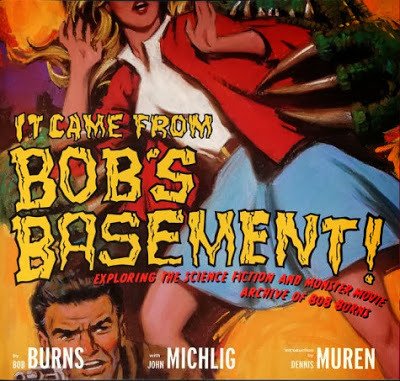
Original metal armature used to animate the ape in 1933's "King Kong"? Bob's got that, along with pieces of the original dinosaur models, the armature from the other great ape movie, 1949's "Mighty Joe Young" and scrapbooks from Willis O'Brien, the guy who brought Kong to life. Bob also owns original facehuggers from "Alien," the helmet from the schlock classic "Robot Monster," a stretched-out David Naughton body used for the transformation scenes in "An American Werewolf in London," props from the "Terminator" movies, original flying saucers from Ed Wood's "Plan 9 from Outer Space" and so much more. And they're all in this book, lovingly photographed and described in detail by Bob himself.
But that's just the tip of the scale-model iceberg. "Bob's Basement" also acts asan underground history of Hollywood, with pages devoted to special effects man Paul Blaisdell, actor (and Frankstein monster) Glenn Strange, life inside a gorilla suit and Bob's own special effects efforts (include photos of a very young Rick Baker honing his makeup skills). There's also an entire chapter focusing on Bob's Halloween spectacles, so if you read about them in "Death Makes a Holiday" and want to see what they actually look like, you'll want this book on your shelf.
I have hundreds of books that examine the art of film from every conceivable angle, from the basic to the advanced to the aggravatingly esoteric. But few books manage to convey the pure, unadulterated love of movies like this one. If you love monster movies -- or if you ever did -- give this book a chance. It'll be like catching up with an old friend ... who has the greatest collection of cool stuff you could ever imagine.
Up next: And speaking of monster movies ...
And thankfully, in his book, "It Came from Bob's Basement," he shares those geektastic treasures with the rest of us.

Original metal armature used to animate the ape in 1933's "King Kong"? Bob's got that, along with pieces of the original dinosaur models, the armature from the other great ape movie, 1949's "Mighty Joe Young" and scrapbooks from Willis O'Brien, the guy who brought Kong to life. Bob also owns original facehuggers from "Alien," the helmet from the schlock classic "Robot Monster," a stretched-out David Naughton body used for the transformation scenes in "An American Werewolf in London," props from the "Terminator" movies, original flying saucers from Ed Wood's "Plan 9 from Outer Space" and so much more. And they're all in this book, lovingly photographed and described in detail by Bob himself.
But that's just the tip of the scale-model iceberg. "Bob's Basement" also acts asan underground history of Hollywood, with pages devoted to special effects man Paul Blaisdell, actor (and Frankstein monster) Glenn Strange, life inside a gorilla suit and Bob's own special effects efforts (include photos of a very young Rick Baker honing his makeup skills). There's also an entire chapter focusing on Bob's Halloween spectacles, so if you read about them in "Death Makes a Holiday" and want to see what they actually look like, you'll want this book on your shelf.
I have hundreds of books that examine the art of film from every conceivable angle, from the basic to the advanced to the aggravatingly esoteric. But few books manage to convey the pure, unadulterated love of movies like this one. If you love monster movies -- or if you ever did -- give this book a chance. It'll be like catching up with an old friend ... who has the greatest collection of cool stuff you could ever imagine.
Up next: And speaking of monster movies ...
Published on October 29, 2013 14:15
October 26, 2013
Suggested Halloween Reading: Part 2
David Skal is one of my favorite writers who specializes in the history of horror, specifically horror movies. If you're looking for a concise, clever look at horror cinema, you can't do much better than "The Monster Show," and he's written equally worthy volumes about more specific subjects, too, including director Tod Browning ("Dark Carnival"), the Dracula films ("Hollywood Gothic") and mad scientists ("Screams of Reason"). He also shows up in the commentary tracks for a lot of the classic horror movie DVDs, and always has something worthwhile to say.
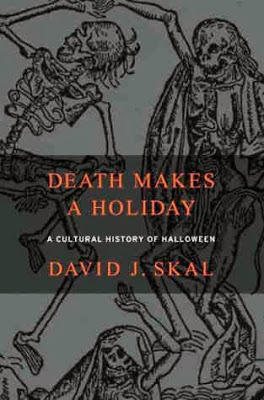
But in his book "Death Makes a Holiday: A Cultural History of Halloween," Skal expands his study past the boundaries of the movie screen and offers an intriguing, clear-headed look at the holiday in question. Skal examines Halloween from just about every imaginable angle -- historical, cultural, pop cultural and sociological. He begins the book with a detailed examination of the urban legend that Halloween candy is packed with needles and razor blades each year, then reveals that there's exactly one -- one -- incident of Halloween candy tampering on record, and that was a father who murdered his own son.
After that, Skal covers, among other things, the religious (and pre-religious) roots of Halloween; why "The Legend of Sleepy Hollow" couldn't be set on the holiday (America didn't celebrate Halloween back then); how, just like Christmas, Halloween used to be little more than an excuse for children to terrorize their towns and destroy property; how Salem turned its shameful past into a profitable present; how the religious right hates San Francisco's Halloween celebration but loves using abortion and homosexuality as terrors in their haunted houses; why people who couldn't find an O.J. mask in 1994 settled for Mike Tyson and Muammar Gaddafi (!); and, last but not least, how the events of Sept. 11 affected the mood of Oct. 31.
Like Skal's other books, "Death Makes a Holiday" is a great little volume, topping out at 224 pages but jammed with fascinating knowledge on every page. If you're a fan of horror, history of, of course, Halloween, you need this one on your shelf. At the very least, it'll give you something to say next week when someone tells you a friend of a friend of a friend knew a kid who got a Hershey bar jam-packed with razor blades.
Up next: I'll bet this guy has a better Halloween display than you.

But in his book "Death Makes a Holiday: A Cultural History of Halloween," Skal expands his study past the boundaries of the movie screen and offers an intriguing, clear-headed look at the holiday in question. Skal examines Halloween from just about every imaginable angle -- historical, cultural, pop cultural and sociological. He begins the book with a detailed examination of the urban legend that Halloween candy is packed with needles and razor blades each year, then reveals that there's exactly one -- one -- incident of Halloween candy tampering on record, and that was a father who murdered his own son.
After that, Skal covers, among other things, the religious (and pre-religious) roots of Halloween; why "The Legend of Sleepy Hollow" couldn't be set on the holiday (America didn't celebrate Halloween back then); how, just like Christmas, Halloween used to be little more than an excuse for children to terrorize their towns and destroy property; how Salem turned its shameful past into a profitable present; how the religious right hates San Francisco's Halloween celebration but loves using abortion and homosexuality as terrors in their haunted houses; why people who couldn't find an O.J. mask in 1994 settled for Mike Tyson and Muammar Gaddafi (!); and, last but not least, how the events of Sept. 11 affected the mood of Oct. 31.
Like Skal's other books, "Death Makes a Holiday" is a great little volume, topping out at 224 pages but jammed with fascinating knowledge on every page. If you're a fan of horror, history of, of course, Halloween, you need this one on your shelf. At the very least, it'll give you something to say next week when someone tells you a friend of a friend of a friend knew a kid who got a Hershey bar jam-packed with razor blades.
Up next: I'll bet this guy has a better Halloween display than you.
Published on October 26, 2013 16:35
October 23, 2013
Suggested Halloween Reading: Part 1
As I might have mentioned once or twice (and as you can see by the rarely updated library widget to the right of this text), I own a lot of books. With the evenings getting darker, the air getting colder and the mood getting spookier, I thought I'd offer up a few ideas for seasonal reading. Heck, it's gotta be better than sitting through whatever chopped-up, ad-filled horror movie AMC is showing at the moment.
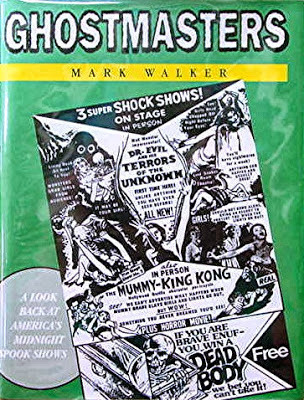
Weep for yourself my fellow horror fan, because unless you're a lot older than what I'm guessing the demographic is for this blog, you've never attended a spook show. I know I never have, and after reading Mark Walker's fascinating book, that's all I want to do as soon as I invent a time machine. And, in the unlikely event I don't break the laws of physics, Walker's book is the next best thing.
With vivid descriptions of the shows, profiles of the major players and, most importantly, hundreds of vintage images, Walker takes us back to the first half of the 20th century, when mysterious men with names like Card Mondor, Francisco and Ray-Mond would take to the stage, make some monsters appear, do a few magic tricks and make way for an all-night marathon of vintage monster movies.
In this age of digital projection, stadium seating and slick suburban megaplexes, it's unlikely you or I will ever experience the glory of a genuine spook show. About the closest we can come is by watching "Monsters Crash the Pajama Party," a curious little DVD from the fine folks at Something Weird. Unlike virtually every other disc they offer, this one is suitable for all ages, meaning that, with that DVD and Walker's book, we can share the thrills of a good ol' American spook show with the generations to come. Maybe they'll figure out a way to revive the damned things.
Up next: How much do you know about the history of Halloween? Not as much as you think.

Weep for yourself my fellow horror fan, because unless you're a lot older than what I'm guessing the demographic is for this blog, you've never attended a spook show. I know I never have, and after reading Mark Walker's fascinating book, that's all I want to do as soon as I invent a time machine. And, in the unlikely event I don't break the laws of physics, Walker's book is the next best thing.
With vivid descriptions of the shows, profiles of the major players and, most importantly, hundreds of vintage images, Walker takes us back to the first half of the 20th century, when mysterious men with names like Card Mondor, Francisco and Ray-Mond would take to the stage, make some monsters appear, do a few magic tricks and make way for an all-night marathon of vintage monster movies.
In this age of digital projection, stadium seating and slick suburban megaplexes, it's unlikely you or I will ever experience the glory of a genuine spook show. About the closest we can come is by watching "Monsters Crash the Pajama Party," a curious little DVD from the fine folks at Something Weird. Unlike virtually every other disc they offer, this one is suitable for all ages, meaning that, with that DVD and Walker's book, we can share the thrills of a good ol' American spook show with the generations to come. Maybe they'll figure out a way to revive the damned things.
Up next: How much do you know about the history of Halloween? Not as much as you think.
Published on October 23, 2013 14:20
October 16, 2013
Great Moments in Comics History, Part 32
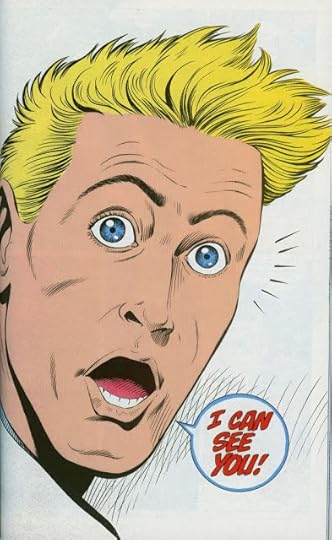
Buddy Baker turns around.
"A New Science of Life," Animal Man #19, Jan. 1990; script by Grant Morrison, pencils by Chas Truog, inks by Doug Hazlewood, colors by Tatjana Wood, letters by John Costanza.
Published on October 16, 2013 06:25
October 9, 2013
Because no one asked, here are the TV shows I'm currently watching
This blog tends to focus mostly on movies, but if I'm being completely honest (or at least as honest as I'm willing to be on the Internet), I have to admit that I spend at least as much time watching TV (often pretty crappy TV) as I do watching movies (often pretty crappy movies). So, if for no other reason that I need to get some content on X-ray Spex before it withers up and dies of loneliness, here's a quick and pointless rundown of the shows I currently watch on a regular basis.
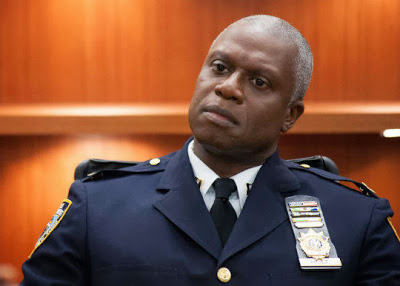
Brooklyn 9-9: It's not great, but it has some solid laughs, and with the departure of "30 Rock" and "The Office" (and the ever-mystifying status of "Community") I figured it was about time to add a new sitcom to the potential lineup. Andy Samberg is fine in the lead, but the real comedy comes from the great Andre Braugher, playing a character not a million miles away from Pembleton on "Homicide." And Terry Crews is pretty damned funny, too.
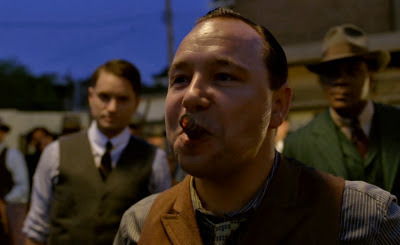
Boardwalk Empire: People complain about this show losing its steam each season, but I love every minute of it, from the evocative 1920s setting to the ever more intense cast of characters. As Nucky Thompson, Steve Buscemi is the calm center of the Jazz Age hurricane, letting characters like Al Capone (Stephen Graham, above), Nelson Van Alden aka George Mueller (Michael Shannon) and Richard Harrow (Jack Huston) spin off in ever crazier directions. Last week, Al's beloved brother was killed (spoiler alert for an 89-year-old historical event), and I can't wait to see him take bloody revenge on "every f*cking thing that crawls" in the coming weeks.
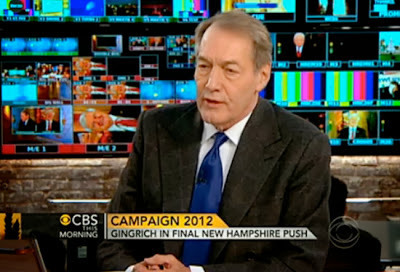
CBS This Morning: I used to have "Today" on in the morning when the family was getting ready, but I switched to "CBS This Morning" when the NBC show just got too damned stupid. The CBS version isn't perfect, but at least it seems like it's nominally aimed at grown-ups. One thing I don't like? How Charlie Rose and Co. pronounce "Eye-Opener," with the accent on the O. Also, just this morning, he mispronounced "Banksy" as"Banksky."
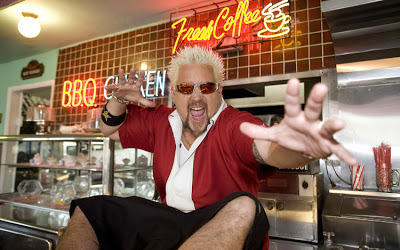
Diners, Drive-Ins and Dives: So-called "hate-watching" gets a bad rap. Sometimes, it's the only way to enjoy what's on TV at any given moment. (And now, right on cue, the voice of my father echoes in my head .... "You could turn it off..."). Thus, my convoluted relationship with Mr. Fieri. To be honest, I only hate-watch half of the show. I actually enjoy the trips to various restaurants and the scenes where the local chefs demonstrate how they make their signature dishes. The rest of the show -- i.e., everything involving the goof in the above photo -- is where that much-maligned hate-watching comes in. Jeez. You can practically smell the Axe Body Spray wafting off your TV.
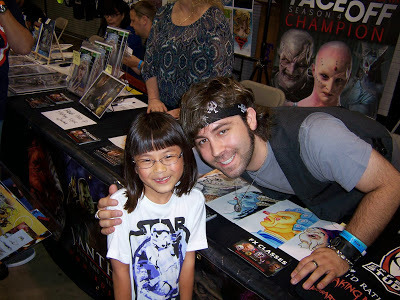
Face Off: If we're counting purely by total hours consumed, this SyFy reality series is by far the most popular show in the Pfeifer household. And that, of course, is thanks to the little girl in the above photo. For some reason, my daughter, Allison, locked onto this show last season and remains crazy about it to this very day. Me? I'm grateful. There are so many worse shows she could be obsessed with (and no doubt will be one day) than this weekly competition focusing on movie makeup. It teaches her the value of hard work, education, cooperation and grace under pressure. And it's pretty entertaining, too, making it relatively painless for mom and dad to watch it -- over and over and over again. (That's Allie with Season 4 champ Anthony Kosar, by the way.)
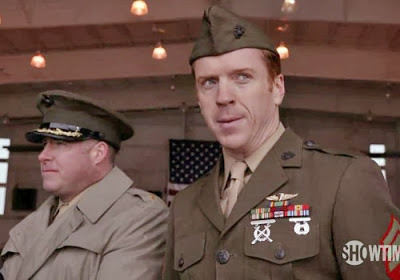
Homeland: Admittedly, this season has been a little off-kilter, mostly because (a) Carrie is waaaaay off her meds and (b) the man above, accused terrorist Nicolas Brody is nowhere to be seen. (Until, that is, the final seconds of the "Next... on Homeland" promo.) I'm still enjoying it, mostly because I'm a sucker for ultra-paranoid conspiracy thrillers. Also, Mandy Patinkin as the guy we aren't sure we can trust makes the whole series worth watching.

The Little Couple: As my wife says, if you don't have a kid, this must be the most boring show in the world. Even if you do have a kid, it's not exactly a thrill a minute, but I suppose there are worse ways to pass a half-hour than watching the above couple raise their recently adopted son from China. Aside from the specific issues they're facing -- mom, dad and son all have forms of dwarfism, hence the show's patronizing title -- it's a lot like what Amy and I dealt with when we brought our own child back from the Far East. Hell, they even stayed at the same hotel.
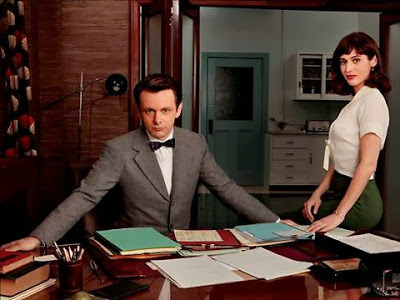
Masters of Sex: If the intriguing premise, talented cast and high production values aren't enough to get you to watch, how about this: It's like "Mad Men," but with frequent nudity? Ah, I thought so. See you Sundays on Showtime.
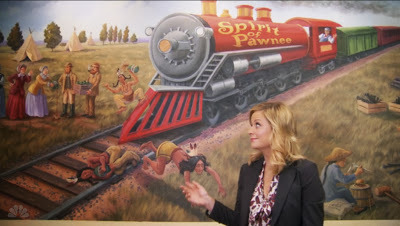
Parks and Recreation: As someone who's been watching the NBC Thursday night lineup since the early 1980s, it seems strange to be down to a single program on that block. But alone or not, "Parks and Rec" is still very funny after several seasons, with one of the best casts on TV. What's more, it's managed to create a fleshed-out world for itself that has become the show's most compelling character. That's not easy to do -- especially in a live-action network sitcom.
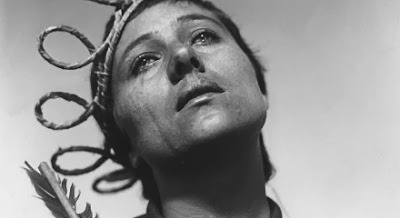
The Story of Film -- An Odyssey: That's not a character from a TV show; it's Maria Falconetti from director Carl Dreyer's classic 1928 film "The Passion of Joan of Arc" -- and it's one of the reasons the series The Story of Film is so fascinating. I've seen a million histories of the movies, with most of them hitting squarely on the same exact spots in Hollywood lore and legend. But Mark Cousin's 15-episode look at cinema isn't limited by the Los Angeles city limits. His history spans the globe, with frequent visits to Europe, Asia, Africa and South America. I've heard of many of the movies he discusses (I have a great Criterion edition of "Joan of Arc" -- and you should, too), but I'm constantly surprised and educated by the movies he uncovers. The Story of Film is airing Monday nights on TCM through December. Even better? TCM is showing movies related to the series -- including many that have never been on TV in the States before.
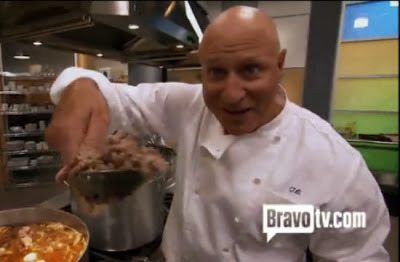
Top Chef: I've been watching this one since its second season, even going so far as to run the betting pool back when I worked in a newsroom. And no matter how inane the challenges are, how self-obsessed the "chef-testants" (ugh) can get or how insufferable the guest judges can be, it's still fun to watch. I have to admit, though -- and maybe it's because you can't actually taste the food while sitting on your couch -- I prefer what Face Off does with the exact same format.
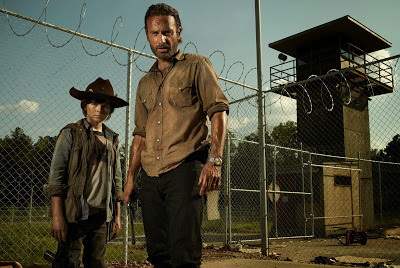
The Walking Dead: It starts again on Sunday, and I'll be watching it ... again. Still, it's one of those shows I watch more for the promise of its premise than for what actually happens. There are great moments, sure, but most of the time, it seems to be spinning its wheels, stretching out storylines long after their sell-by date. I have a hard time remembering how the last season ended. That can't be a good sign, can it?

Brooklyn 9-9: It's not great, but it has some solid laughs, and with the departure of "30 Rock" and "The Office" (and the ever-mystifying status of "Community") I figured it was about time to add a new sitcom to the potential lineup. Andy Samberg is fine in the lead, but the real comedy comes from the great Andre Braugher, playing a character not a million miles away from Pembleton on "Homicide." And Terry Crews is pretty damned funny, too.

Boardwalk Empire: People complain about this show losing its steam each season, but I love every minute of it, from the evocative 1920s setting to the ever more intense cast of characters. As Nucky Thompson, Steve Buscemi is the calm center of the Jazz Age hurricane, letting characters like Al Capone (Stephen Graham, above), Nelson Van Alden aka George Mueller (Michael Shannon) and Richard Harrow (Jack Huston) spin off in ever crazier directions. Last week, Al's beloved brother was killed (spoiler alert for an 89-year-old historical event), and I can't wait to see him take bloody revenge on "every f*cking thing that crawls" in the coming weeks.

CBS This Morning: I used to have "Today" on in the morning when the family was getting ready, but I switched to "CBS This Morning" when the NBC show just got too damned stupid. The CBS version isn't perfect, but at least it seems like it's nominally aimed at grown-ups. One thing I don't like? How Charlie Rose and Co. pronounce "Eye-Opener," with the accent on the O. Also, just this morning, he mispronounced "Banksy" as"Banksky."

Diners, Drive-Ins and Dives: So-called "hate-watching" gets a bad rap. Sometimes, it's the only way to enjoy what's on TV at any given moment. (And now, right on cue, the voice of my father echoes in my head .... "You could turn it off..."). Thus, my convoluted relationship with Mr. Fieri. To be honest, I only hate-watch half of the show. I actually enjoy the trips to various restaurants and the scenes where the local chefs demonstrate how they make their signature dishes. The rest of the show -- i.e., everything involving the goof in the above photo -- is where that much-maligned hate-watching comes in. Jeez. You can practically smell the Axe Body Spray wafting off your TV.

Face Off: If we're counting purely by total hours consumed, this SyFy reality series is by far the most popular show in the Pfeifer household. And that, of course, is thanks to the little girl in the above photo. For some reason, my daughter, Allison, locked onto this show last season and remains crazy about it to this very day. Me? I'm grateful. There are so many worse shows she could be obsessed with (and no doubt will be one day) than this weekly competition focusing on movie makeup. It teaches her the value of hard work, education, cooperation and grace under pressure. And it's pretty entertaining, too, making it relatively painless for mom and dad to watch it -- over and over and over again. (That's Allie with Season 4 champ Anthony Kosar, by the way.)

Homeland: Admittedly, this season has been a little off-kilter, mostly because (a) Carrie is waaaaay off her meds and (b) the man above, accused terrorist Nicolas Brody is nowhere to be seen. (Until, that is, the final seconds of the "Next... on Homeland" promo.) I'm still enjoying it, mostly because I'm a sucker for ultra-paranoid conspiracy thrillers. Also, Mandy Patinkin as the guy we aren't sure we can trust makes the whole series worth watching.

The Little Couple: As my wife says, if you don't have a kid, this must be the most boring show in the world. Even if you do have a kid, it's not exactly a thrill a minute, but I suppose there are worse ways to pass a half-hour than watching the above couple raise their recently adopted son from China. Aside from the specific issues they're facing -- mom, dad and son all have forms of dwarfism, hence the show's patronizing title -- it's a lot like what Amy and I dealt with when we brought our own child back from the Far East. Hell, they even stayed at the same hotel.

Masters of Sex: If the intriguing premise, talented cast and high production values aren't enough to get you to watch, how about this: It's like "Mad Men," but with frequent nudity? Ah, I thought so. See you Sundays on Showtime.

Parks and Recreation: As someone who's been watching the NBC Thursday night lineup since the early 1980s, it seems strange to be down to a single program on that block. But alone or not, "Parks and Rec" is still very funny after several seasons, with one of the best casts on TV. What's more, it's managed to create a fleshed-out world for itself that has become the show's most compelling character. That's not easy to do -- especially in a live-action network sitcom.

The Story of Film -- An Odyssey: That's not a character from a TV show; it's Maria Falconetti from director Carl Dreyer's classic 1928 film "The Passion of Joan of Arc" -- and it's one of the reasons the series The Story of Film is so fascinating. I've seen a million histories of the movies, with most of them hitting squarely on the same exact spots in Hollywood lore and legend. But Mark Cousin's 15-episode look at cinema isn't limited by the Los Angeles city limits. His history spans the globe, with frequent visits to Europe, Asia, Africa and South America. I've heard of many of the movies he discusses (I have a great Criterion edition of "Joan of Arc" -- and you should, too), but I'm constantly surprised and educated by the movies he uncovers. The Story of Film is airing Monday nights on TCM through December. Even better? TCM is showing movies related to the series -- including many that have never been on TV in the States before.

Top Chef: I've been watching this one since its second season, even going so far as to run the betting pool back when I worked in a newsroom. And no matter how inane the challenges are, how self-obsessed the "chef-testants" (ugh) can get or how insufferable the guest judges can be, it's still fun to watch. I have to admit, though -- and maybe it's because you can't actually taste the food while sitting on your couch -- I prefer what Face Off does with the exact same format.

The Walking Dead: It starts again on Sunday, and I'll be watching it ... again. Still, it's one of those shows I watch more for the promise of its premise than for what actually happens. There are great moments, sure, but most of the time, it seems to be spinning its wheels, stretching out storylines long after their sell-by date. I have a hard time remembering how the last season ended. That can't be a good sign, can it?
Published on October 09, 2013 14:49
October 2, 2013
Movies I Watched in September
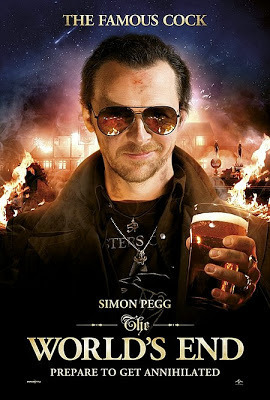
As a huge fan of "Shaun of the Dead" and "Hot Fuzz" (and, for that matter, the TV show "Spaced" and the movie "Scott Pilgrim Vs. The World"), the one must-see movie on this summer's list was the latest from Edgar Wright, Simon Pegg and Nick Frost, and I'm pleased to say I was not disappointed. The story of a drunken loser (Pegg) who coaxes his straitlaced mates to join him in a pub crawl combined just the right elements of wistful nostalgia, mournful regret and, as the story turns in the second act, an alien invasion. I had a genuine moment of idiocy watching "The World's End," thinking "Gee, Martin Freeman's character seems oddly upbeat all of a sudden" at the exact same time I was wondering "Gee, I wonder if any of the main characters will be replaced by robots" without once putting two and two together. And I have to applaud the ending of the movie -- I honestly didn't expect it to go as far as it did. Great use of Bill Nighy, too (or at least his voice.)
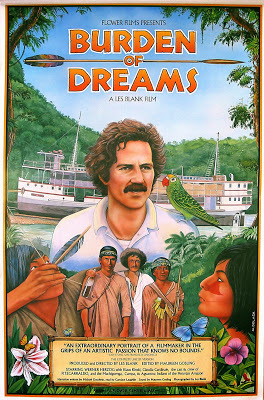
Just as the documentary "Hearts of Darkness" is at times more fascinating than the movie it's describing, "Apocalypse Now," so is this documentary about Werner Herzog's "Fitzcarraldo" more interesting than the fictional film. Or at least that's my assumption. I haven't actually seen more than a few clips of "Fitzcarraldo," but I can't imagine it being more compelling that this real-life tale of an obsessed/obsessive director trying to drag a steamship over a mountain in South America for the sake of a movie. The movie begins with a glimpse of original leads Jason Robards and Mick Jagger before they had to leave the movie due to Robard's illness, then proceeds to Herzog losing one remote location, hiring his usual crazed collaborator Klaus Kinski, then trying again and again (and again) to get that damn boat up the hill. My favorite part? When the locals demonstrate how they make a potent drink by chewing up mashed-up root and spitting it back into the bowl. Even Klaus Kinski, no stranger to bizarre behavior, was unwilling to drink that potion.
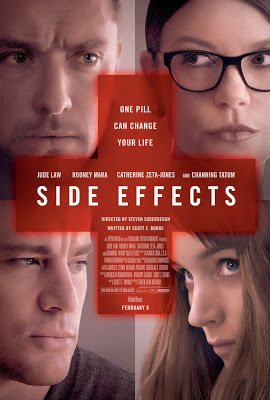
Why does a talented director like Steven Soderbergh announce his retirement while countless hacks continue to pollute our movie and TV screens? Grrrr. Well, if this is indeed Soderbergh's last cinematic effort (personally, I have my doubts), he went out in fine style. It's not a piece of art or a groundbreaking work in film, but "Side Effects" is the sort of smart, suspenseful drama that barely seems to exist these days. I don't want to give away the plot because the twists and turns are more than half the fun, but the movie begins with a troubled young wife (Mara Rooney, very good) struggling with mental health issues who begins a new drug regimen. What looks to be a torn-from-today's-headlines serious look at modern medication becomes something else, then becomes something else again. Suffice to say it's well-acted by everyone and, with Soderbergh behind the camera (he handled the cinematography too, billed as "Peter Andrews"), it looks spectacular and zips right along.
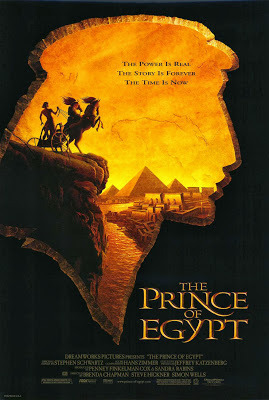
Hadn't seen this animated movie since its 1998 release, but it's not bad, especially as an example of what cel animation could be before the current style of computer visuals took over. (There are plenty of computer effects in "Prince of Egypt," of course, but they're more subtly integrated into the overall look.) The story of Moses is really made for animation, with the plagues and the parting of the Red Sea (complete with whales floating in the walls of water) looking especially impressive. The most memorable scene, though, is the first Passover, when the spirit of God swirls down from the skies and kills the first-born sons in each household. It's filmed like a horror movie, with no music and only the eerie echo of the wind on the soundtrack ... until, that is, the wailing of the parents begins. Pretty chilling stuff, especially for a big-budget musical cartoon.
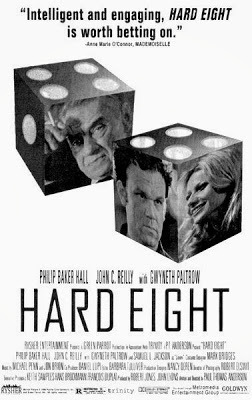
Ever since his epic "Boogie Nights," P.T. Anderson has always talked about making his next movie a simpler, more stripped-down affair. He rarely even really tries -- just look at "Magnolia," "There Will Be Blood" or "The Master" -- but his first feature-length film was indeed a lean, clean look at the underbelly of the gambling world. With only four characters of any note and scenes that take place in a handful of casinos, coffee shops and hotel rooms, it's obviously a first film -- but also obviously something special from a director destined for big things. The performances carry most of the weight, with Anderson regulars Philip Baker Hall and John C. Reilly as mentor and protege, supported by Gwyneth Paltrow as the love interest and Samuel L. Jackson as the, forgive the pun, wild card.
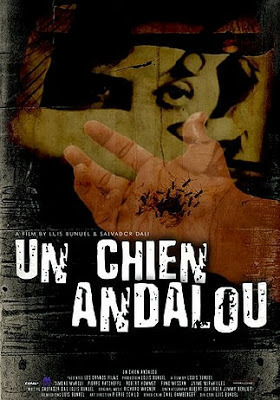
If you think Turner Classic Movies only shows quaint old films for the whole family, you need to tune in during the middle of the night sometime. This 1929 surrealist classic by Luis Bunuel and Salvador Dali showed up recently in the wee hours, presented as part of TCM's programming inspired by the excellent "Story of Film: An Odyssey" series the channel is showing this fall. So why did it air in the middle of the night? Well, "Un Chien Andalou" might be 84 years old, but it's still pretty strong stuff. This, as the above poster hints, is the notorious film that begins with a razor slicing an eyeball (don't worry -- it's just an egg yolk) and gets more bizarre as it goes. Brief nudity, perverse relations, dead cows and ants emerging from a hole in a guy's hand. The fact that it's an old, black-and-white movie makes the strangeness even stranger.
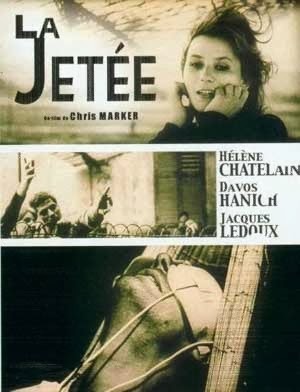
Another short film broadcast by the fine folks at TCM. Chris Marker's 1962 science fiction mini-epic takes place in a grim future where cruel scientists send a man back into the past to try and discover a way to prevent the world's sad fate. Sound familiar? It should. Terry Gilliam was inspired by "La Jetee" when he made "12 Monkeys" a few decades later. Marker's movie lacks the scope and star-power (and color) of Gilliam's film, but it's pretty amazing in its own right. Told through a series of still images, it's spellbinding in the way it depicts the future, the past and the longing for a connection between the two. Watch carefully, because there's one magic moment when one of the still images actually moves. It's barely there, but it has a tremendous impact.

Another great one from British filmmakers Michael Powell and Emeric Pressburger. Wendy Hiller plays a determined woman with her whole life planned (the title is her personal philosophy), including a financially beneficial marriage to a rich industrialist. But when she arrives in Scotland, the weather -- and, of course, fate -- prevent her from journeying to his island, and she spend a few days with a Navy officer (Powell/Pressburger favorite Roger Livesay) that make her, for the first time, question her grand scheme. I'm sure you can guess where the plot is leading, but what makes "I Know Where I'm Going" special is the same thing that makes all the Powell/Pressburger films special -- a sense of magic realism that lends every frame, every moment and every word (spoken or unspoken) a sense of almost cosmic significance.
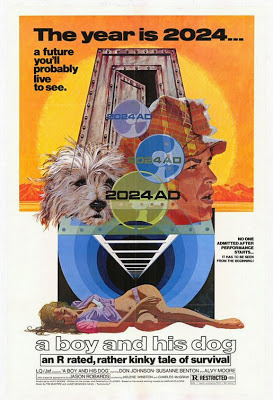
I don't think I've watched this post-apocalyptic oddity since my long-ago college days, but TCM (them again!) ran it a few nights ago. I'd forgotten just how well it works -- it's simple, unsubtle and definitely low-budget, but damn, it really delivers the good. Don Johnson, impossibly young, plays Vic, a wanderer of the post-World War IV wasteland, looking for canned food to eat and women (willing or unwilling) to "use." His loyal companion is Blood, a hyper-intelligent dog who communicates with Vic via telepathy. (Blood is played by Tiger from "The Brady Bunch" and voiced by the late, great Tim McIntire, who played Alan Freed in the 1978 obscurity "American Hot Wax.") I remembered what everyone remembers: the twisted joke of an ending (and it's a good joke), but I'd completely forgotten about the outdoor theater Vic and Blood visit late one night. The films, scratchy and run through an ailing projector, are creepy combinations of violence and sexploitation, obviously made on the cheap. I don't know if director L.Q. Jones filmed them, fobbed them off on a second unit or cobbled them together from actual black-and-white roughies, but they really seem like the last movies ever made, cranked out for pennies to appeal to a civilization that didn't have much time left. It's that imagination -- and attention to detail -- that makes "A Boy and His Dog" worth watching, even if you know how it's going to end.
Published on October 02, 2013 14:41
September 18, 2013
Great Moments in Comics History, Part 31
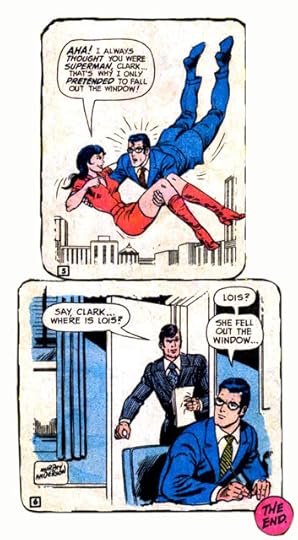
Superman solves that Lois problem once and for all.
"Super Plops," pencils and inks by Murphy Anderson, script colors and letters by unknown, Plop #5, May-June 1974
Published on September 18, 2013 14:06
September 6, 2013
Great Moments in Comics History, Part 30
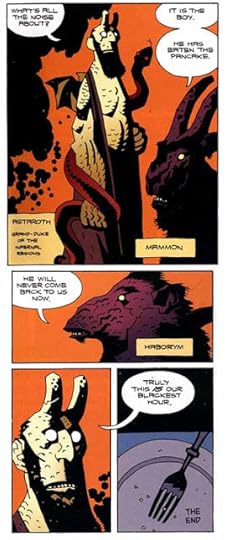
Hell receives some bad news.
"Pancakes," story, pencils and inks by Mike Mignola, colors by Dave Stewart, letters by Pat Brosseau. Originally published in black and white in Dark Horse Presents Annual 1999, reprinted and colored in "Hellboy Vol. 4: The Right Hand of Doom" (2000).
Published on September 06, 2013 17:39
September 1, 2013
Movies I Watched in August
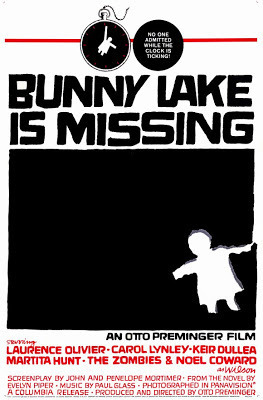
What starts out as your standard "missing child" movie (hell, it's right there in the title) slowly eases into a "does the child exist" movie before suddenly changing into something really strange in the last act. I won't spoil any surprises here, but director Otto Preminger's crystal-clear expositional style really pays off in that ending, when all the down-to-earth moments take on a nightmarish quality. One note: If you're watching this because you're a huge fan of '60s Brit rockers The Zombies, they only appear on a TV during a scene in a bar. Not sure why they're there at all, as a matter of fact -- but someone felt the need to include them on the poster.
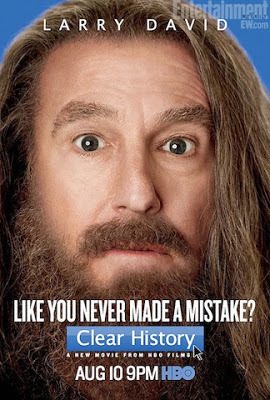
Lord (or, to be more accurate, Larry) only knows when (or if) we'll get another season of "Curb Your Enthusiasm," but until that wonderful day arrives, at least we've got this pretty funny HBO movie from Larry David. Though he appears in that beard and hair at the beginning, before long he's the bald asshole we all know and love. It's a pretty funny story, with solid supporting work from Jon Hamm, Kate Hudson and Michael Keaton. If I had one criticism, there's a little too much Chicago (the band, not the city), but even those parts are pretty, pretty, pretty funny.
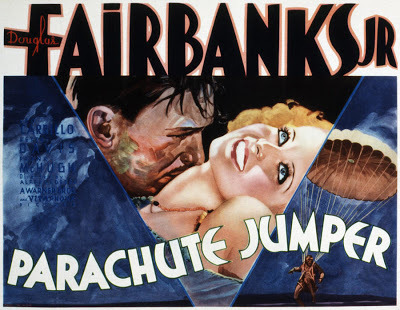
Oddball pre-Code film starring Douglas Fairbanks Jr. and Frank McHugh as a couple of ne'er do well veterans who stumble from job to job, eventually working for a slick gangster smuggling the occasional bag of drugs and intimidating the occasional interloper. Bette Davis plays the love interest, and though she apparently considered this her least favorite film of all time, it's a lot of fun, meandering from scene to scene in the largely plotless way a lot of early 1930s films tend to do. If you're hoping for lots of parachute action, you're out of luck -- there are only a few scenes, and they smell suspiciously like stock footage -- but if you're hoping for strange pre-Code moments, you get one right off the bat: the movie virtually starts with a long close-up of a dancing girl's rear end.
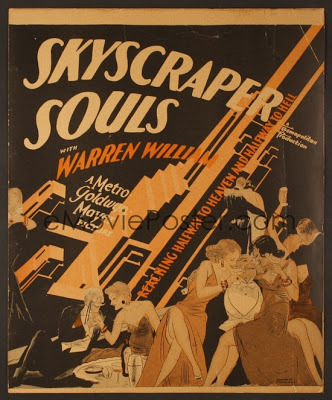
In this 1932 drama, Warren William (one of my favorite pre-Code actors) plays a hilariously ruthless tycoon obsessed with the colossal skyscraper he's built on the New York skyline. (Several shots show the fictional building dwarfing the then-new Empire State Building.) In a sort of Grand Hotel manner there are several subplots involving various employees and their love lives, but the star of this one is definitely William, who takes every opportunity to cheat on his wife with his mistress and his mistress with her (much younger) secretary (played by a young Maureen O'Sullivan.) He also cheats his partners to secure control of the building (seemingly causing a second Depression all by himself) and gloats that though many men died constructing the building, it's worth it to him. Few actors could pull off such a megalomaniacal jerk, but thankfully, ol' WW is one of them.
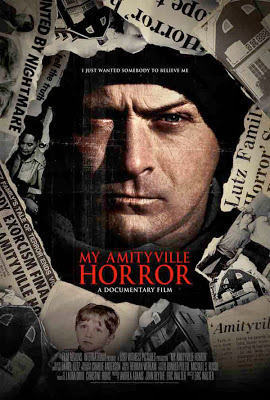
A haunting little documentary, in every sense of the word. Focusing on Daniel Lutz, son of the couple that owned the legendary "Amityville Horror" house, it delves into a disturbing childhood that may have lacked actual ghosts, but definitely didn't lack actual horrors. Lutz completely believes that his childhood house was infested with something supernatural, and he stresses that point again and again. When gets angry at the suggestion of trying a lie detector, you really feel for the guy -- and for the little boy he once was. Whether he's lying or not doesn't even matter -- you get the feeling he's worried about scary truth lurking under the ghost story.
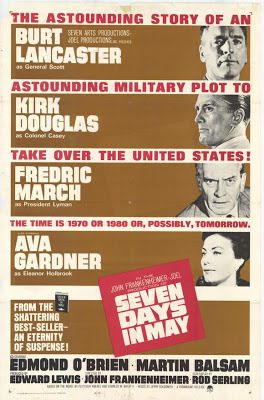
Not as great as director John Frankenheimer's "The Manchurian Candidate" (let's be honest -- very few films are), but this is an invigoratingly tense star-studded thriller that wonders what might happen if a general (Lancaster) plotted a military coup to overthrow a liberal president (March). The movie's real strength comes from the way it puts all its pieces on the board then takes time moving them around, revealing an intelligence and patience you just don't see these days. By the way, that line on the poster about "The time is 1970 or 1980..." refers to the way this 1964 movie slips in bits of "futuristic" technology, like TV communicators. (Giving Frankenheimer the chance to shoot scenes with images on screens -- something he loved to do.) Otherwise, this one seems set squarely in its era -- and that's a good thing.
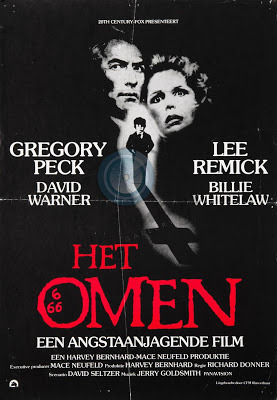
Though I've seen pretty much every well-known horror movie ever made, I'd somehow missed this Richard Donner blockbuster. So how does it play, decades past its sell-by date? Not well, I'm sorry to say. Both too slick and too slow to be scary, any sense of horror is built around a handful of big scenes -- and I'd seen every single one of them in clips long before seeing the movie as a whole. Maybe that's my fault and not the movie's, but I've seen "Rosemary's Baby" a dozen times and it never fails to generate some genuine chills, no matter how much I know what's coming next.
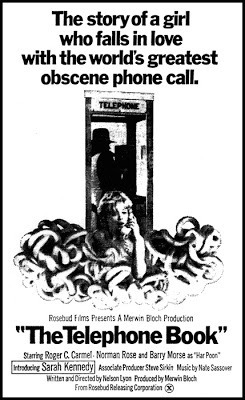
I'd read about this 1971 cinematic oddity from the late Nelson Lyon in several cult film books, and it certainly lives up to its reputation as a relic of that late '60s/early '70s era when a movie could be really, really strange and find an audience, as long as it had originality, style and (of course) a little bit of sex. "The Telephone Book" has all three in spades, with a plot driven by a free spirit's search for the guy who's been making dirty phone calls. Naturally, in her quest, she encounters every weirdo in Manhattan, which takes up most of the movie's somewhat long running time. (These encounters, as funny as they might have been in 1971, have dated to an amazing extent 42 years later.) What makes the movie worth a look (and a listen) is the striking black-and-white cinematography and the casting of Norman Rose -- a voice over specialist -- as the caller. You never see his face, but his voice really verges on hypnotic.
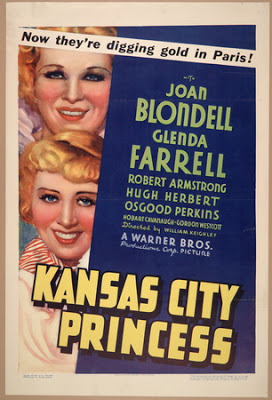
And August winds up with this 1934 comedy about a manicurist (Blondell) dating a gangster (Armstrong, a year after "King Kong") who loses his engagement ring along with her desire to marry him, then somehow ends up on (a) a train to New York and (b) a cruise ship to Paris. Remember how I said "Parachute Jumper" hopped from plot point to plot point without much logic tying it all together? Well, "Kansas City Princess" does that in spades, with a storyline involving a rich guy (pre-Code perennial Hugh Hubert) whose wife is cheating on him with a Russian psychologist coming out of nowhere in the middle of Act III. Still, if you like old movies -- and Blondell, Farrell and Armstrong -- it's not a bad way to pass 65 minutes. (Movies tended to be a lot shorter back then.)
Published on September 01, 2013 19:52
August 26, 2013
Some notable selections from the paperback section of my bookshelf
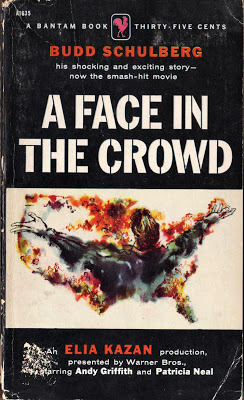
"A Face in the Crowd" is one of my favorite movies, and my wife discovered this vintage 1957 edition of Budd Schulberg's screenplay at an estate sale. Thanks again, hon.
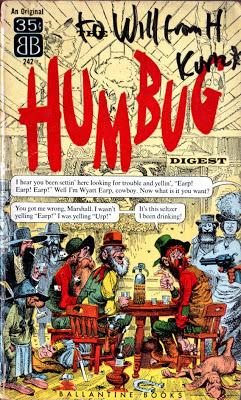
Not as complete as the Fantagraphics two-volume collection of this post-MAD satire mag, but this is a vintage 1958 edition of the paperback. And yes, that is a genuine Harvey Kurtzman autograph.
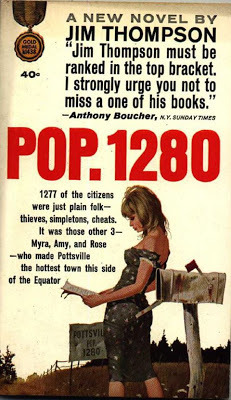
My local comic book shop used to have a used-paperback section in the back, and one lucky day I managed to score three novels from the late, great Jim Thompson for less than a buck apiece. The others were a Lion Paperback of "The Alcoholics" and a Gold Medal of "Texas by the Tail," but this one remains one of my favorites, right up there with "The Killer Inside Me" and "A Hell of a Woman."
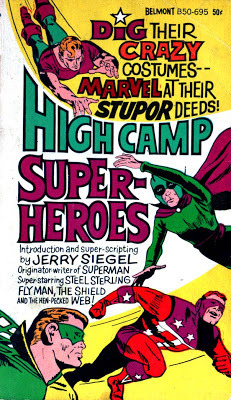
Long before DC tried (repeatedly) to cash in on these bargain basement superheroes, this paperback was rushed out to cash in on the popularity of the "Batman" TV show, as well as DC and Marvel's product (notice the prominent "DC" and "Marvel" in the cover hype). Not good by a long shot, but a lot of fun.
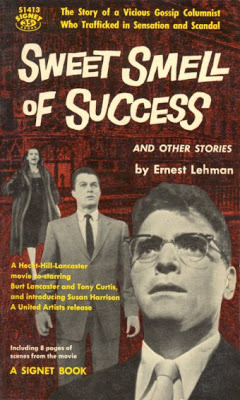
This collection of short stories by Ernest Lehman includes the one that inspired the classic movie as well as some other snappy, cynical tales of ambition and desperation. Nice insert of photos from the film, too.
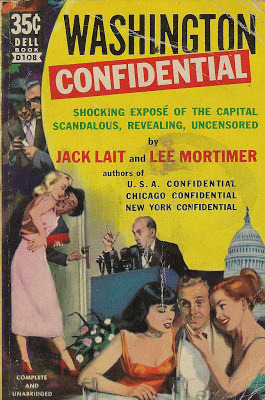
When I first arrived in Rockford way back in 1990, I stopped by the local Goodwill store to see what the paperback selection was like. It turned out to be surprisingly choice, with this little gem sitting right next to its equally (and wonderfully) dated companion volumes, "New York Confidential," "Chicago Confidential" and "Women Confidential." I bought them all, of course. It took me awhile to find the epic "U.S.A. Confidential," and when I snagged that at a used bookstore, it cost me fifteen bucks -- but hell, it was signed by Mister Lait and Mortimer. Such a deal!
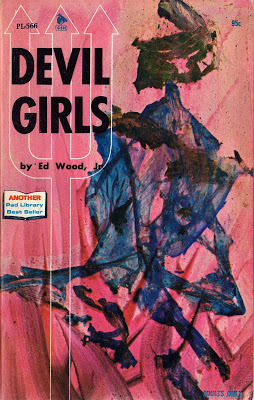
Another score from that comic book shop backroom. I've never seen another Ed Wood "novel" for sale in my life, much less one that cost me a mere 50 cents.
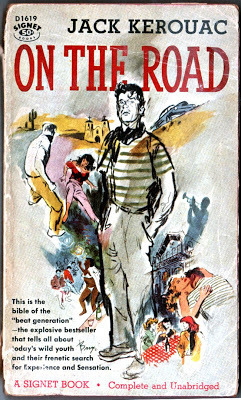
1958. First paperback edition. Cost me a quarter.
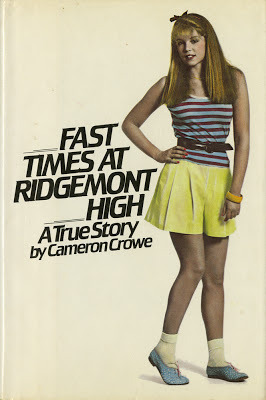
Sure, it's the newest book on the list by a long shot, but have you seen what it goes for? I paid $2.65 used back when I was a freshman. Even if you're a big fan of the movie (like me), the book is definitely worth seeking out -- there are scenes, characters and subplots that never made it into the film.
Published on August 26, 2013 18:27
Will Pfeifer's Blog
- Will Pfeifer's profile
- 23 followers
Will Pfeifer isn't a Goodreads Author
(yet),
but they
do have a blog,
so here are some recent posts imported from
their feed.



